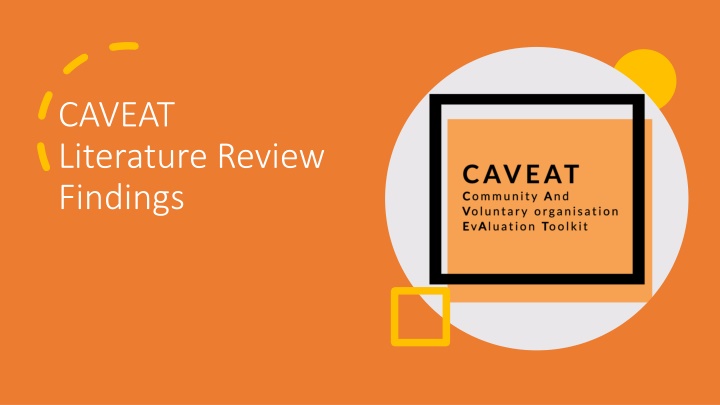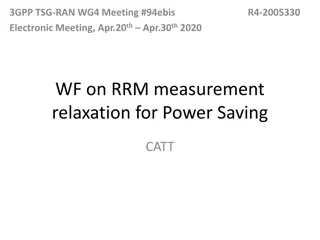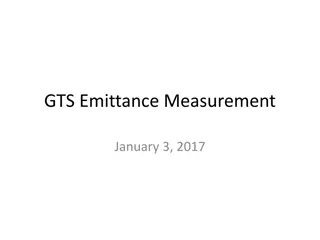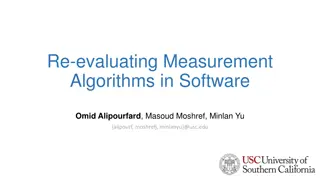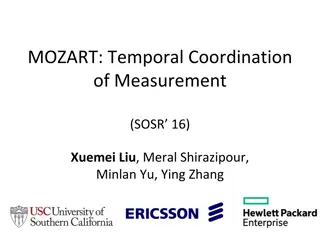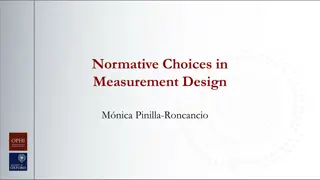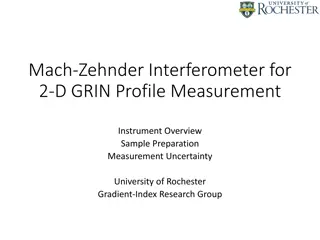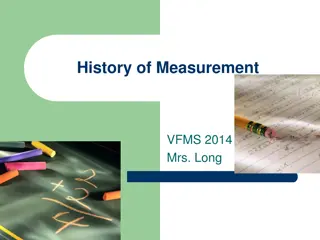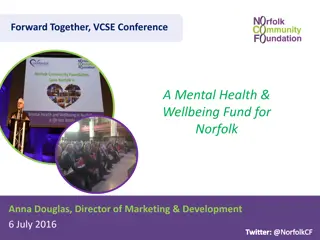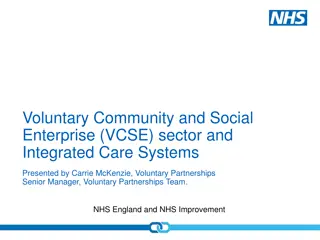Key Findings on VCSE Impact Measurement
A literature review revealed differences in reporting outputs and outcomes of VCSE organizations working with the elderly population. The findings led to the development of a Holistic Evaluation Framework model to assess impact across various domains such as physical, social, psychological, and economic well-being.
Download Presentation

Please find below an Image/Link to download the presentation.
The content on the website is provided AS IS for your information and personal use only. It may not be sold, licensed, or shared on other websites without obtaining consent from the author.If you encounter any issues during the download, it is possible that the publisher has removed the file from their server.
You are allowed to download the files provided on this website for personal or commercial use, subject to the condition that they are used lawfully. All files are the property of their respective owners.
The content on the website is provided AS IS for your information and personal use only. It may not be sold, licensed, or shared on other websites without obtaining consent from the author.
E N D
Presentation Transcript
CAVEAT Literature Review Findings
A literature search was conducted to understand how VCSE organisations working with the older population show their impact. It was found that VCSE literature often reported on outputs, namely audit or descriptive data (i.e., number of befriending calls made) to evidence what changes their services have made, alongside qualitative evidence (i.e., case studies). This returned 70 articles, of which 48 were from academic journals and 23 were from VCSE literature. Peer reviewed articles, on the other hand, reported on outcomes, concentrating on concepts such as wellbeing, which are more subjective, using validated well-being instruments and measurements such as WEMWBS or the UCLA loneliness Scale. These key differences led the team to create a Holistic Evaluation Framework model (next Slide)
Outputs (i.e. who access what, when and their characteristics) Holistic Holistic Evaluation Evaluation Framework Framework Holistic Evaluation Framework Outcomes Economic Outcomes (i.e., longitudinal Impact of services upon wellbeing) (i.e. Cost Benefit Analysis, KPI reporting, quality assessments, SRI s)
From the literature reviewed there is evidence suggesting that the outcomes measured fall into 4 areas, all representing key components which make up the term well-being . There was a heavier weighting on economical outcomes in grey literature through using descriptive data. There was a heavier weighting on social and psychological outcomes in published articles through using validated measurements (for example the UCLA loneliness Scale) The next slides look at each of these 4 areas more closely
Physical wellbeing The ability to maintain a healthy quality of life that allows individuals to get the most out of daily activities without undue fatigue, physical stress or strain. It is paramount to being able to access a wide variety of services, community resources, and social activities. This has been assessed by strength- based assessments, mobility questionnaires or observations, fall prevention techniques. Social wellbeing Defined on a micro (individual) and meso (community or organisational) level. Micro level: typified by interacting with a range of people and belonging to a range of familial or social groups. Meso level: Characterised as having a sense of belonging to, and making contributions within, local communities and wider society. Articles found measured social participation, social inclusion, civic participation, loneliness/isolation, digital skills for social connectivity, Quality of Life (QoL), making / sustaining new connections. Psychological wellbeing Characterised by having good mental health, opportunities to improve mental health, and sustaining or increasing cognitive skills. Intertwined with social wellbeing, this outcome specifically relates to an individual s emotional and cognitive resilience and ability to perform cognitive tasks which impact other areas of life. Articles found have measured overall mental wellbeing, anxiety, depression, mental health indicators and predictors, confidence, coping, resilience, self- realisation, autonomy and grief management. Economic impact & wellbeing Evaluations focus on the reduction of primary health care usage, cost saving impacts of volunteer use and return on investment assessments. However, economic wellbeing is also closely linked with other outcomes on a micro scale; having present and/or future financial and housing security, the ability to make sound economic choices (or have a trusted person to), having budgeting skills and having the ability to access community infrastructure, social and occupational pursuits.
This diagram visually represents key components of the term well-being that are used in evaluations. Resilience Self worth Quality of Life Connectedness Positive contribution to community Engagement & motivation Companionship & relationships Reduced isolation & loneliness Sharing experiences Mental well-being Satisfaction with life Reduced stress Autonomy Cognitive ability Coping with Bereavement, loss and change Psychological Social Economical Physical Physical confidence Strength Balance Enjoyment & engagement in exercise Fall prevention Physical resilience Social Return on Investment Reduced pressure on Primary Care Services Community Links Program viability Social Impact Transport costs & accessibility
This review has highlighted the differences between outputs and outcomes and identified 4 areas of wellbeing typically assessed when evaluating a VSCSE service. Using validated well-being measurements can be instrumental for demonstrating meaningful impact within VCSE services providing support for the older population. Conclusions Measuring, tracking and promoting holistic well-being can be useful for multiple stakeholders involved in disease prevention and health promotion, along with individual and community resilience. Tracking these outcomes effectively is pivotal for securing ongoing funding which enables the continuation of vital VCSE services.
